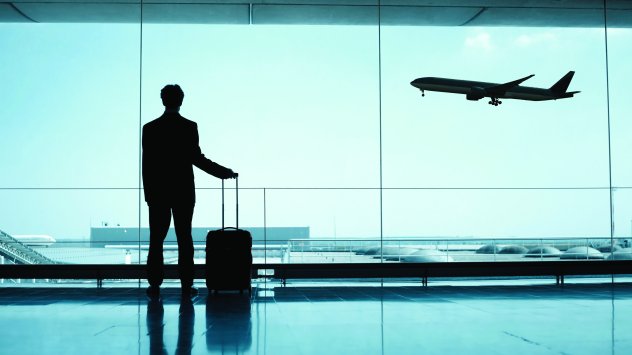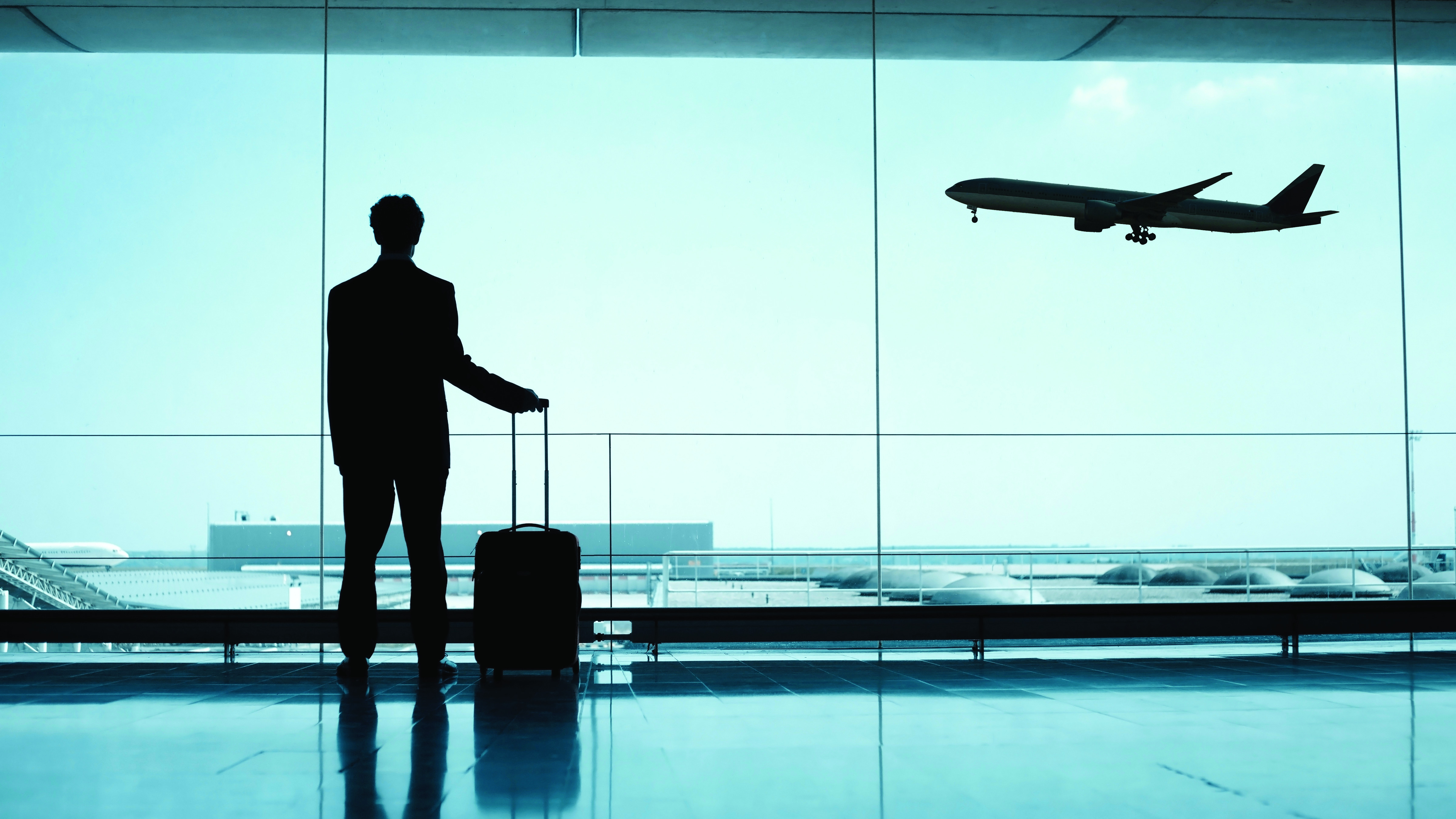
By Veronika Denizova
The tourism industry achieved a significant recovery this year since the impatient for traveling people took advantage of the open borders. But the business travels segment is not yet close to its pre-pandemic levels. More than two years and a half since the onset of Covid-19, business tourism is taking slower steps towards a comeback.
There are some optimistic signals – demand in the US, UK and other developed markets is increasing during the workdays of the week and city business hotels report growth in occupancy. But consumer sentiment in the sector suggests we won't see a full recovery anytime soon, and some analysts even doubt it ever will. Even if we reach pre-pandemic levels in terms of the volume of air travel or overnight stays, the way business tourism will look will be different, the consulting company STR wrote in its analysis.
In 2019, the world industry of corporate travels was estimated at $1.4 trillion. According to data of GBTA, the business tourism spending increased by 5.5% year-on-year in 2021, but only reached $697 billion, still less than half of pre-pandemic levels. Many of the limitation due to Covid-19 were removed which created a favorable environment, but the worsened macroeconomical and geopolitical conditions cast a new shadow over the sector earlier this year. These new factors influence the speed and direction of the recovery in both global and regional plan. That pushed back expectations for a full recovery in 2024 to mid-2026, according to the GBTA forecast released in mid-August. It says business travel spending will increase 34% in 2022 to $33 billion, still far from its pre-pandemic peak.
Other experts expect even slower recovery. According to Vitalij Vladykin, Senior Research Manager – Services & Payments, Euromonitor International business travel is expected to recover to the pre-pandemic level in terms of the number of trips only by 2027 at the earliest when outbound business tourism flow will reach over 270 million trips globally. “But in general, recovery in international business travel gathers pace during 2022 and will show high double-digit rates for at least the next two years”, he said in a comment to Bloomberg Businessweek Bg.
Among the surveys of the sector, there are also signals that business tourism may never recover to its former scale or form. A survey by Morning Consult among the Americans that traveled for work at least three times per year before the pandemic shows that 40% of them expect to never undertake a business trip again. The research took place in July and August 2022 with 16 000 participants from North and South America, Europe and the Asia-Pacific region. It turns out that the US market is more optimistic about this kind of work commitments.
For example, in France, 58% of the surveyed people expect to never travel for work again. In the UK they are 55%, Germany – 50% and in Japan – 48%. On the other hand, people in India, China and Brazil are predicting a resumption of business travel. Those who will travel for work will be guided by new corporate policies and tighter budgets than in the pre-Covid-19 years. “It’s undeniable now that business travel will never return to a pre-pandemic normal”, states Morning Consult report. Similar are the results of an STR research from July 2022 among 440 businessmen, who shared their opinion on the possibility to travel for work now and when the pandemic is over. More than half of them (55%) say that it is less likely to do a business trip with a night stay now, compared to 2019. Attitudes are similar for business travel after the expected end of the pandemic.
Some airlines have encouraged their investors that the lucrative business flight market will recover soon. The four largest US airlines – Delta, American, United and Southwest – said corporate travel was at about 80% of its pre-pandemic levels. But executives in charge of business travel at US companies are in no mood for an imminent recovery.
A research by Deloitte in February showed that less than 1/5 of the managers that organize business trips expect the number and costs of business trips to return to their levels from 2019 until the end of this year. The slowest pace of normalization of the business tourism can be considered as a signal that companies are implementing plans to reduce the bloated travel budgets they had before the pandemic. The most expensive and less needed business flights are replaced with a video calls. The 20% of business travel that airlines have not yet resumed may never materialize. "The conferencing technology that replaced nearly all of corporate travel beginning in early 2020 will likely continue to replace some of it for the foreseeable future", said the report by consultants Deloitte.
Vitalij Vladykin also points out that sustainability and budgetary concerns increasingly push companies to favor video conferencing over face-to-face meetings that require business travel. The key obstacle to the recovery - in terms of leisure and business travel - currently is extremely high inflation rates. According to Euromonitor International’s Voice of the Industry: Travel Survey, 62% of travel executives said that inflation had a moderate to extensive impact on their business. This makes the business environment very challenging, as there is little scope for absorbing costs. 44% of respondents said that they were accepting a lower profit margin, compared to 56% who were raising all if not some of their prices.
From the annual research of GBTA becomes clear that the factors that influence negatively the business trips are the persistent inflation, high energy prices, disrupted supply chains, covid restrictions in China, regional effects of the war in Ukraine and expectations for greater resilience. 73% of business travelers surveyed believe that inflation is affecting their travel plans, and 69% are concerned that a possible recession would affect their travel.
Globally, double-digit annual growth in business tourism is expected this year, according to GBTA estimates, but regional differences will be evident, as they were in 2021.North America led the recovery last year thanks to a pick-up in domestic business flights. However, Western Europe was still affected by Covid-19 and reported a decline in business travel spending in 2021. Both regions are expected to register a strong recovery with an average annual growth of 23.4% and 16.9% respectively until 2026 d. Corporate travel spending in South America will jump as much as 55% this year, after which growth will moderate to more moderate levels. The Asia-Pacific region led the recovery in 2021, but the trend reversed this year due to China's strict policy against Covid-19. For 2022, business travel spending is expected to grow by 16.5% in the region. The Asia Pacific is expected to show the fastest growth over the forecast period in terms of outbound business trips being followed by Australasia, the Middle East, and Africa. At the same time, Western Europe and North America will show the slowest recovery rates.
Companies around the world are not completely abandoning business tourism, rather they are becoming more demanding about when, why, with what and who to send on a business trip. According to the consulting company AlixPartners, corporations are cutting back on flights for meetings with colleagues, but prioritizing meetings with clients. The company forecasts that business trips will remain 15-25% below their pre-pandemic levels at least until 2025. The exit from the pandemic has accelerated a trend that has been observed in the last few years – a blurring of the boundaries between leisure and business tourism. The so-called “bleisure” appeared – a combination between leisure and business trips.
This is not a new trend, it has been around since before the pandemic, but is now getting a boost from the travel demand recovery. Consumers are looking for a better work-life balance and business travel is no exception. Companies in the sector that manage to offer comfortable working conditions, but also opportunities to extend their stay in order to rest, will certainly improve their business KPIs," said Vitaly Vladikin. According to Zippia.com data it is expected 36,2 million Americans to work remotely until 2025. This is a great news for some hotel owners that want to attract both business and ordinary tourists. Flexible working schedules and opportunities for online working allow people to go to their business meeting place few days earlier to work remotely and enjoy their free time at the new place. To attract “bleisure” tourists, hotel owners invest in new technologies as a cloud software, high-speed internet, self check-in, mobile apps and also an office equipment. The future of work is changing, the future of the corporate management is changing, it is logical for the business trips to change too.
Business tourism will not disappear, it will just evolve.



